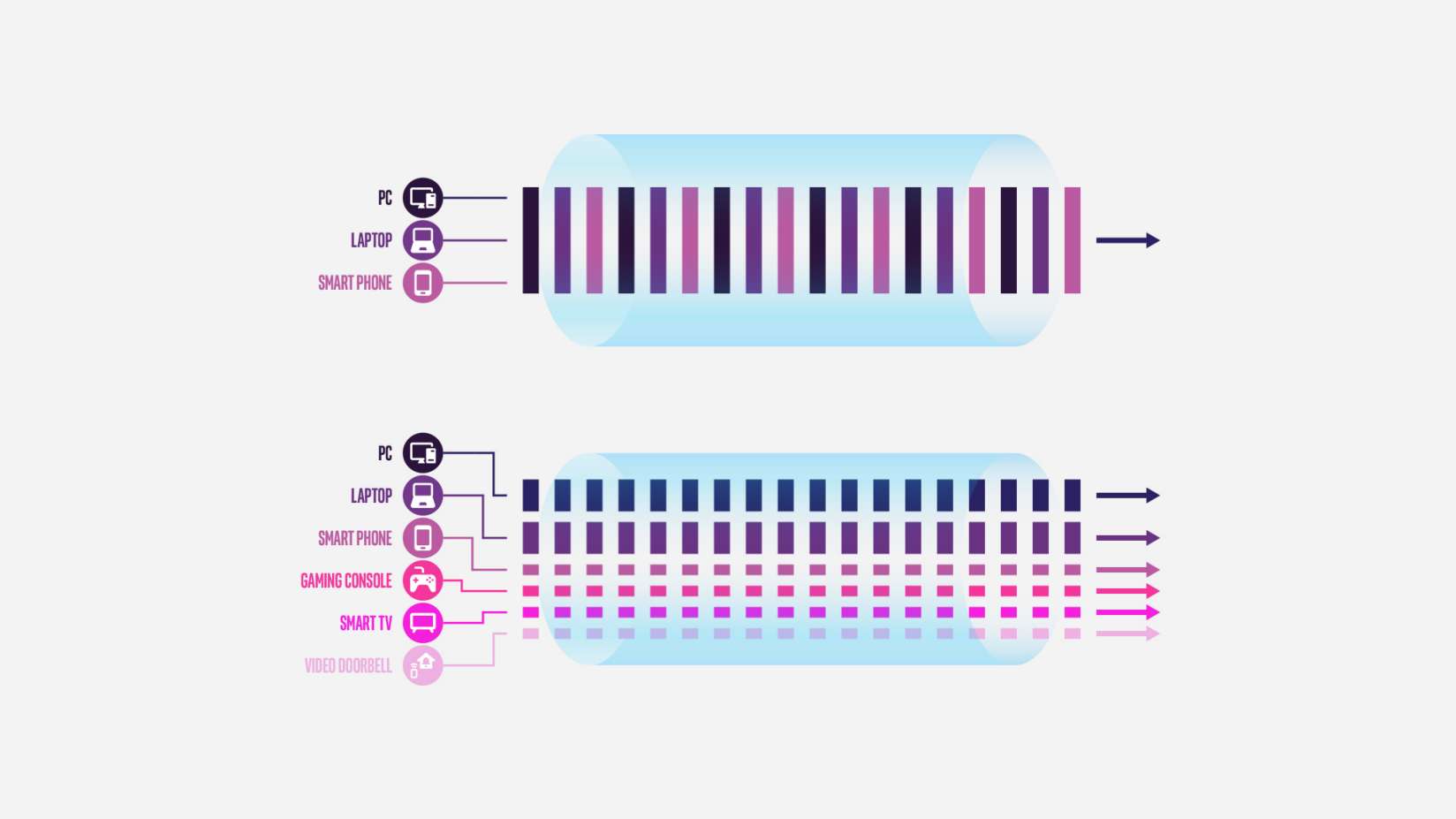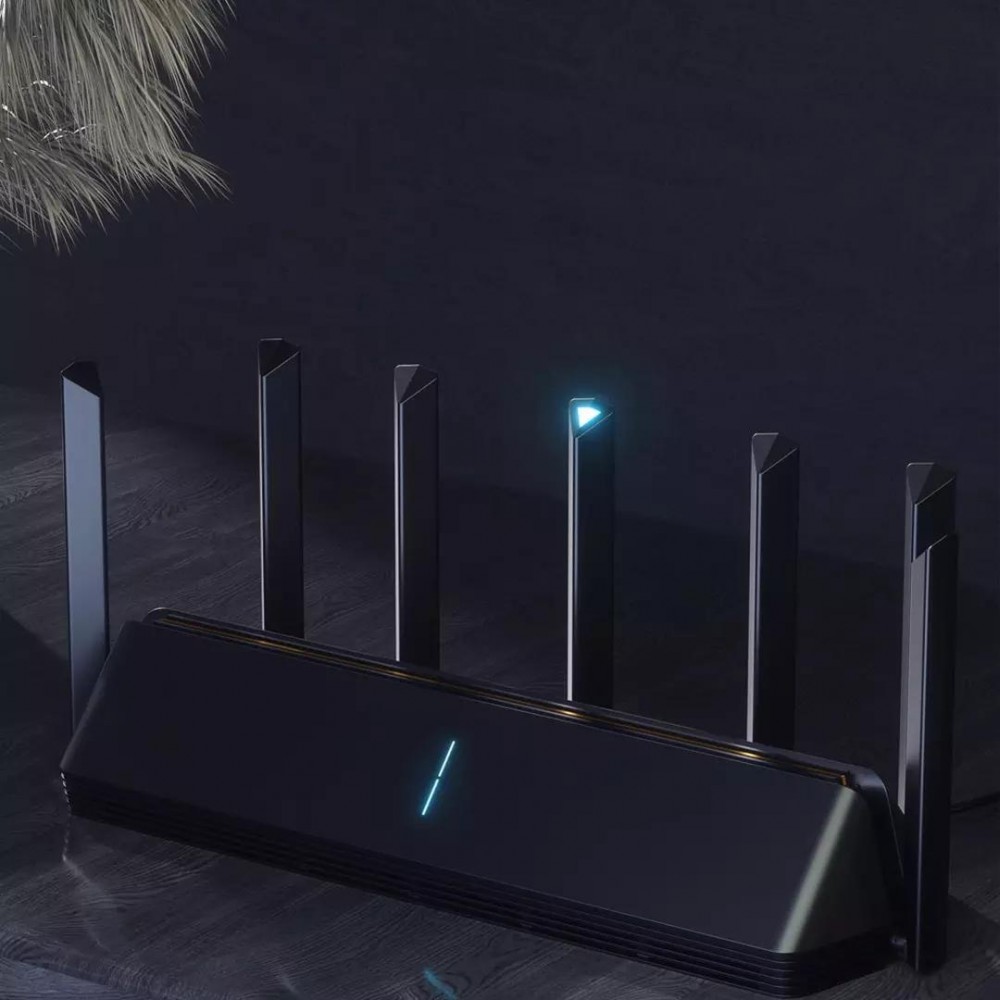In the first half of 2020, although various industries were greatly impacted by the epidemic, the release of new products in the digital circle did not seem to be greatly affected. In 2020, with the launch of a large number of mobile devices such as Snapdragon 865 and Kirin 990, it not only brings spring to 5G networks, but also activates the outbreak of the Wi-Fi 6 routers.
The vast majority of mobile devices newly launched in 2020 support the wifi6 standard, so wifi6 routers will explode simultaneously in the first half of 2020. Different from 2019, the wifi6 router has stepped down from the high-end altar. Both the price and the performance experience have become very close to the people. Major manufacturers are also focusing on the mid-to-low-end market of wifi6. In the one-year development of wifi6, I have successively started with about 10 wifi6 routers. Now, let’s take stock of how to choose the cheap and easy-to-use Wi-Fi 6 routers on the market.
PS: For ordinary users, the budget for purchasing routers is limited, so this article will focus on the purchase and interpretation of low-end products with a price of 200-1000 yuan.
1. Overview of wifi6
I have introduced the popular science content of wifi6 in detail in previous articles, so I will not expand it in detail here. I will briefly summarize it so that new friends can have a preliminary understanding.

wifi6 can also be called 802.11ax. Compared with wifi5 standard, wifi6 can realize higher-order modulation method (1024-QAM), higher bandwidth (160M bandwidth), and more perfect MU-MIMO (multi-user multiple-input multiple-output). ), the theoretical bandwidth reaches 9607.8M. In terms of technical parameters, the improvement of WiFi6 compared with previous generations of standards is very obvious. The application of these new standards and technologies makes wifi6 greatly improve the wireless rate and signal coverage quality, can communicate with multiple devices at the same time, improve the utilization rate of resources, effectively use the space (wireless channel), and improve the performance of dense signal under the network stability. It is no exaggeration to say that wifi6 is really 6, very powerful, greatly improving the speed of wifi and reducing the delay.
2020 has become a watershed for wifi6. Since Qualcomm’s mobile chips fully support the wifi6 standard, almost all newly launched mobile devices support wifi6, which greatly improves the current predicament of not many devices supporting wifi6.
Generation/IEEE Standard |
Frequency |
Maximum Linkrate |
Year |
|---|---|---|---|
| Wi-Fi 6 (802.11ax) | 2.4/5 GHz | 600–9608 Mbit/s | 2019 |
| Wi-Fi 5 (802.11ac) | 5 GHz | 433–6933 Mbit/s | 2014 |
| Wi-Fi 4 (802.11n) | 2.4/5 GHz | 72–600 Mbit/s | 2009 |
2. What are the wifi6 routers under $200?
In 2020, although the wifi6 router is fully developed, the number of products on the market is not very large, and the thousand yuan is just a watershed. Within US$200, it is still the main battlefield of Chinese brands Huawei, Xiaomi and TP, most of which are concentrated in the price range of 200-500 yuan.
Almost all the wifi6 products of the three first-tier brands of ASUS, NETGEAR, and LEAGUE are priced above $200, and they are mainly high-end products. The only products priced at less than 1,000 yuan are ASUS TUF GAMING AX3000 and NETGEAR RAX40 AX3000M. In addition, ASUS’s latest RT-AX82U event price can barely be regarded as a product within 1,000 yuan.
Judging from the current market sales, the 200-500 price range is the most competitive, mainly the competition between Xiaomi AX1800, Xiaomi AX3600, Huawei AX3, and Huawei AX3 Pro. As for the recently launched Honor Router 3 AX3000, Redmi AX5, etc., they are all vest versions of Xiaomi and Huawei, and the experience is not much different from the former. There are also 3-4 wifi6 products sold by TP-link, but the experience is hard to describe.
3. Interpretation of commercially available and inexpensive Wi-Fi 6 routers
1. The price of 200-300 yuan Wi-Fi 6 routers
There are two main products at the price of 200-300, one is Huawei AX3, and the other is TP-LINK TL-XDR1860. Both TL-XDR1860 and Huawei AX3 are wifi6 routers released in April, featuring ultra-low prices. The event price is only 199 yuan for Huawei AX3 and 266 yuan for TL-XDR1860. These two are the ones I have actually reviewed. Let’s interpret whether these two routers are worth buying.
(1) Comparison of parameter configuration
Configuration parameters of Tp-link XDR1860:
• Wireless speed: dual-band concurrent 1800Mbps, 2.4GHz 573Mbps+5GHz 1200Mbps;
• Transmission standard: 2.4 GHz & 5 GHz;
• Processor: MT7621DAT;
• Memory: 128MB;
• Flash: unknown;
• Support 80Mhz bandwidth
Configuration parameters of Huawei AX3:
• Wireless rate: dual-band concurrent 2976Mbps, 2.4GHz 574Mbps+5GHz 2402Mbps;
• Wireless Band: 802.11ax/ac/n/a 2 x 2 & 802.11ax/n/b/g 2 x 2MU-MIMO;
• Antenna gain: 5dBi;
• Processor: Lingxiao quad-core 1.2 GHz CPU;
• RAM: 128MB;
• ROM: 128MB;
• Support 160Mhz bandwidth
Through the comparison of the above two sets of parameters, it is not difficult to find that Huawei AX3 is not only cheap, but also the parameter configuration is ahead of Tp-link XDR1860. In addition, Huawei AX3 also supports 160Mhz bandwidth, which is a full-blooded version of wifi6, supports mesh networking, and is also in a leading position in function.
(2) Signal quality comparison
In the previous review, I have compared the signal quality performance of these two products in detail. For detailed data, please refer to my original article, here are only some key data.
The signal tests are all carried out under the same conditions, and the signal gap is clear at a glance. Considering the coverage and wall penetration effect of the router to be tested, it was not placed in the middle of the house, but in the living room. In this way, the signals of the second bedroom and the master bedroom need to penetrate two solid walls, which is a very test of the coverage of the signal.
Comparing the signal strength of Huawei AX3, TP-link 1860, and AX3Pro at various points through the line chart, the test conditions of the three are exactly the same. Through the comparison of the line chart, it can be found that whether it is a 2.4G signal or a 5G signal, the performance of Huawei AX3 is not as good as that of Tplink1860.
Although the configuration parameters of TP-link 1860 Wi-Fi 6 routers are not as good as that of Huawei AX3, it is still slightly better than Huawei AX3 in terms of signal strength and coverage.
(3) Transmission speed test (throughput)
The signal strength is only a part of the wifi experience, and the throughput test of the transmission speed will also greatly affect the user experience. I tested the throughput of TP-link 1860 and Huawei AX3 respectively, built an iperf3 server, and used 10 threads for speed measurement, which can more accurately show the current maximum throughput.
After testing TP-link 1860 under ideal conditions, the limit speed of 2.4G signal is 94.5Mb/s, and the limit speed of 5G signal is 557Mb/s;

After testing Huawei AX3, under ideal conditions, the limit speed of 2.4G signal is 100Mb/s, and the limit speed of 5G signal is 790Mb/s
In the limit speed test of throughput, Huawei AX3 Wi-Fi 6 routers performs better. Although the signal strength performance is not as good as that of TP-link 1860, the network speed and delay in actual use are better than TP-link 1860.
(4) Summary
The $100 entry-level wifi6 product can only perform like this. The performance difference between Huawei AX3 and TP-link 1860 is not big. Although the signal strength of TP-link 1860 is slightly better than that of Huawei AX3, the speed and delay in actual use are not good. AX3 works well. Considering the price, features and experience, Huawei’s AX3 is better. Buying TP-link 1860 is not recommended!
But after all, it is an entry-level product. The performance and signal strength of Huawei AX3 and TP-link 1860 are not ideal, and there is no problem with coverage within 50 square meters. Once it is more than 50 square meters, these two models are a bit powerless. If the budget is sufficient, it is strongly recommended to buy products in the price range of 200-300 US dollars!
2, 100 USD price For Wi-Fi 6 routers
The two entry-level products introduced above can only be regarded as barely able to solve the problem. If you want to get a good experience, I still recommend buying 100+ level products. The main recommendations here are the highly competitive Huawei AX3 Pro and Xiaomi AX1800. In 2020, Huawei’s efforts in wifi6 routers are obvious to all, and the title of price butcher is none other than Huawei. In order to compete with Huawei’s explosive AX3 Pro, Xiaomi launched the AX1800 for close combat, and the prices of the two are currently very close.
(1) Comparison of parameter configuration
Configuration parameters of Xiaomi AX1800:
• Wireless speed: dual-band concurrent 1800Mbps, 2.4GHz 573Mbps+5GHz 1200Mbps;
• Transmission standard: 2.4 GHz & 5 GHz;
• Processor: Qualcomm quad-core A53 CPU with a frequency of 1.2GHz;
• Memory: 256MB;
• Flash: 128MB;
• Support 80Mhz bandwidth
Configuration parameters of Huawei AX3:
• Wireless rate: dual-band concurrent 2976Mbps, 2.4GHz 574Mbps+5GHz 2402Mbps;
• Wireless Band: 802.11ax/ac/n/a 2 x 2 & 802.11ax/n/b/g 2 x 2MU-MIMO;
• Transmission standard: 2.4 GHz & 5 GHz, support dual frequency optimization;
• Antenna gain: 5dBi;
• Processor: Lingxiao quad-core 1.4 GHz CPU;
• RAM: 256MB;
• ROM: 128MB;
• Four independent signal amplifiers;
• Support 160Mhz bandwidth
In terms of parameters, Huawei is still a bit ahead, mainly because the AX3 Pro’s support for 160Mhz bandwidth does add a lot of points.
(2) Signal quality comparison
The signal test also used the same test conditions as above, placing the router in the living room. In this way, the signals of the second bedroom and the master bedroom need to penetrate two solid walls, which is a very test of the coverage of the signal.
After the actual test comparison, the 2.4G signal strength of the Xiaomi AX1800 is slightly higher than that of the Huawei AX3 Pro in all points, and the Xiaomi AX1800 performs better in 5 of the 6 test points in the 5G signal. Especially in the three points 4, 5, and 6 that need to pass through the wall, it is obvious that the effect of Xiaomi AX1800 is much better.
Overall, the AX1800’s signal coverage is very good, leading the performance of the Huawei AX3 Pro in an all-round way.
(3) Transmission speed test (throughput)
Or build an iperf3 server and use 10 threads for speed measurement, which can more accurately show the current maximum throughput. After testing Xiaomi AX1800, under ideal conditions, the limit speed of 5G signal is 793Mb/s;
Under ideal conditions, the limit speed of the 5G signal of Huawei AX3 Pro Wi-Fi 6 routers is 852Mb/s;
Huawei AX3 Pro supports 160Mhz bandwidth, and it still has certain advantages in terms of throughput rate. When using 160MHz bandwidth, Huawei AX3 Pro is a complete victory in 5G downlink speed, and there is no suspense.
(4) Summary
At the same price, there is almost no difference between the actual use experience of Huawei AX3 Pro and Xiaomi AX1800. Both products are worth recommending and purchasing, and they are more suitable for purchase as entry-level products of wifi6. The gap between stability and performance is not large, and they can be regarded as cost-effective products. The only thing to note is that the HUAWEI AX3 Pro generates a lot of heat, so you need to take heat dissipation measures in summer.
As for the choice between these two routers, my suggestion is: if your receiving terminal supports 160MHz bandwidth, there is no doubt that Huawei AX3 Pro will provide you with faster speed. Otherwise, the Xiaomi AX1800 with better signal coverage performance is a good choice for daily use.
In addition, the currently listed Redmi router AX5 is said to be the vest version of the Xiaomi AX1800. The hardware level is the same as that of the Xiaomi AX1800. Obviously, the Redmi router AX5 is also an alternative item from the hardware level. However, this one has not been evaluated, and the specific experience remains to be verified.
3. 300 USD + price FOR Wi-Fi 6 routers
There are not many products in this price range. We mainly recommend 3 products, Xiaomi AX3600, ASUS TUF GAMING AX3000 and ASUS RT-AX82U. Since the price difference between each is not small, we will not make a comparison here. Below is a review of each product and the reasons for its recommendation.
(1) Xiaomi AX3600

Xiaomi AX3600 is the first domestic wifi6 router this year. It has attracted much attention at the beginning of its launch and is known as the turnaround of Xiaomi routers. However, the entire wifi6 router market was disrupted by the pricing of Huawei AX3 pro, resulting in a substantial promotion of Xiaomi AX3600. The current general price is around 510 yuan. The price is still much higher than the AX3 Pro, but it is undeniable that the experience of using the Xiaomi AX3600 is still good. Especially after the version upgrade, it has fully supported 160Mhz and mesh networking functions, and the cost performance has been improved by a level. After the comparative evaluation with Huawei AX3 Pro, Xiaomi AX1800, Huawei AX3, TP-link 1860, Xiaomi AX3600 is in the lead. Therefore, if you want to further improve the user experience on top of AX3 Pro and Xiaomi AX1800, Xiaomi AX3600 is the only choice for the price of 500.
After comparing the signal strength with Huawei AX3 Pro Wi-Fi 6 routers and Lingshi ea8300, it can be found that the signal strength of Xiaomi AX3600 is overall leading.
In the test of the transmission speed, the wireless speed of Xiaomi AX3600 Wi-Fi 6 routers has reached 106MB/S, which has reached the limit speed of the wired Gigabit network and performed well.
Overall, Xiaomi’s AX3600 Wi-Fi 6 routers (set to restart every day) performs well. It has excellent signal coverage and performance, and supports 160Mhz bandwidth and mesh networking are its plus points.
(2) ASUS TUF GAMING AX3000 Wi-Fi 6 routers
ASUS TUF GAMING AX3000 Wi-Fi 6 routers is a product launched at the end of 2019, and the stability of the firmware has been improved. ASUS routers have always had good performance and playability. This router is mainly for e-sports and has a built-in NetEase UU accelerator, which can be accelerated whether it is PC, PS4 or Switch. It can provide gamers with an excellent networking experience and lower latency performance.
The signal strength of the TUF-AX3000 Wi-Fi 6 routers is above average, and it can cover most locations of 150 square meters. The 2.4G signal can be fully covered without dead ends, and the 5G signal can penetrate a wall for coverage. The overall signal strength is better than the performance of the Xiaomi AX3600. In addition, TUF-AX3000 provides Aimesh function, which can realize mesh networking with ASUS routers that support Aimesh function, and easily achieve whole-house signal coverage.
TUF-AX3000 is a full-blooded wifi6 router that supports 160Mhz bandwidth. After using a wifi6 device to connect, it can run the full speed of a gigabit wired network without pressure.
On the whole, ASUS TUF-AX3000 Wi-Fi 6 routers is an excellent router, and its workmanship, function and appearance have a good performance. The professional processor Broadcom BCM43684 solution has left a lot of foreshadowing for players, and the playability is also higher. The built-in NetEase UU accelerator supports PS4, switch and other host acceleration, which is also the favorite of gamers.
(3) ASUS RT-AX82U Wi-Fi 6 routers
RT-AX82U is the latest new generation of WiFi6 gaming router. Based on its unique image and appearance, it is nicknamed the devil fish. Built-in 1.5GHz Broadcom professional-grade processing chip, with 512k L2 cache. At the same time, it has built-in Archer hardware-level network acceleration to capture & transmit data packets faster.
ASUS RT-AX82U supports full 1024QAM 4*4 160MHz, dual-band WiFi6 concurrent rate of 5400M, supports 4X4 MU-MIMO and OFDMA technology, intelligently opens 5G frequency band DFS channel, can give full play to bandwidth performance and improve transmission efficiency. In addition, RT-AX82U also supports WAN/LAN port aggregation, which can integrate two Gigabit network connections, support up to 2Gbps bandwidth, and achieve 2000M in and out without bottlenecks.
RT-AX82U can be regarded as a member of ASUS’s high-end series, and it is very valuable to be able to achieve a price within 1,000 yuan during the event. This router is impeccable in both appearance and performance. If you are an e-sports player looking for an ultra-high gaming experience, the ASUS RT-AX82U is perfect for you. RT-AX82U is applicable to all scenarios, and can support multi-scenario network acceleration such as mobile games and e-sports, online class mode, video conferencing, CCTV ipc-hdw2439t-as-led-s2 ,live broadcast, etc., without fear of others competing for network speed. It has a GAMING PORT port and defaults LAN1 as the gaming port. After connecting, the router will preferentially forward the data packets of the gaming port to reduce the network delay problem of the game.
In general, ASUS RT-AX82U is a wifi6 product that needs to be good-looking and good-looking, and to experience the experience. Especially with the blessing of Broadcom’s professional-level processing chip, the later stage is very playable and can realize a lot of functions. In addition, the unique e-sports optimization can bring players a better gaming experience, with all the coolness and performance.
end
The above are the few wifi6 router products that I recommend to you that are easy to use and inexpensive within a thousand yuan. I hope it will be helpful for your purchase.
• Solve the problem: Huawei AX3, not recommended to buy Tp-link 1860
• Beginner recommendation: Xiaomi AX1800 is the first choice, Huawei AX3 Pro is the alternative
• Advanced recommendation: Xiaomi AX3600
• High performance recommendation: ASUS RT-AX82U














